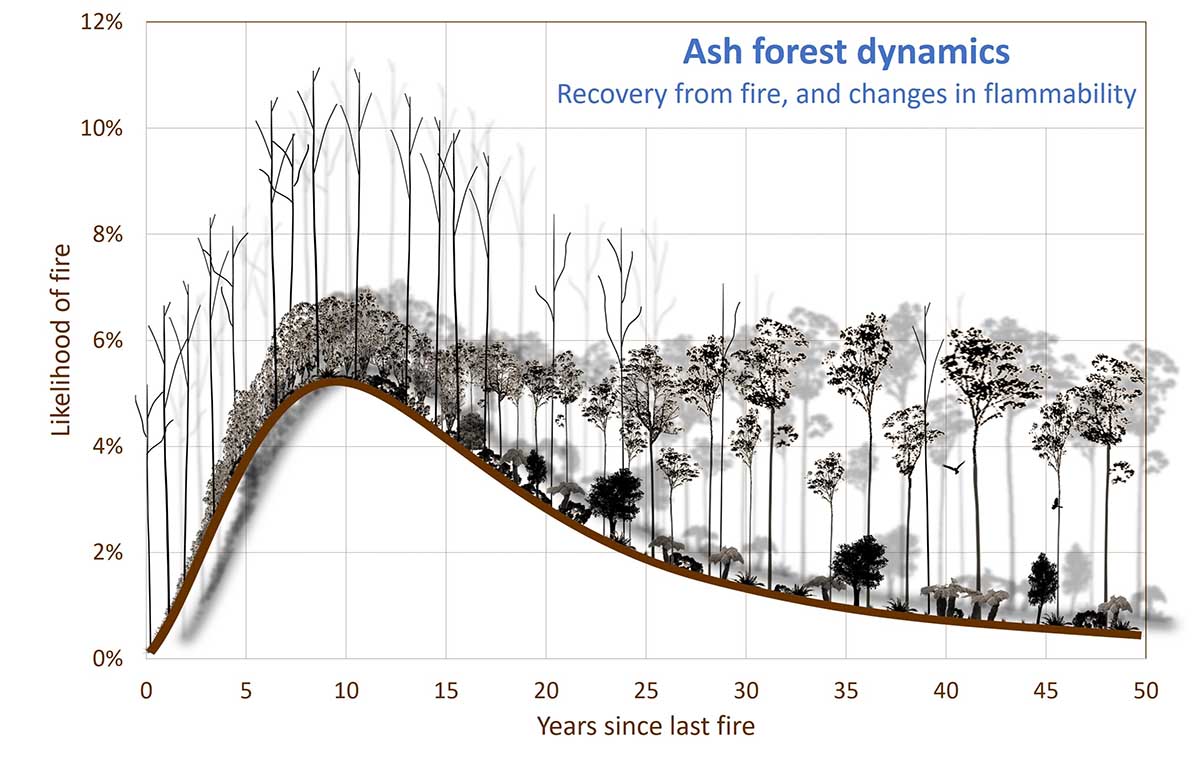August 7, 2018
A burning issue: Forest fires make more fires
Research shows that in many instances, fires are more likely in recently burnt forests
The most comprehensive analysis ever performed of fires in the Australian Alps has revealed that fire has made the forests more likely to burn. Frequent fire increases the risk of fire and of ecosystem collapse in mountain forests, which are highly vulnerable to climate change.
“My research contradicts one of the central assumptions in Australian fire management – that forest simply accumulates fuel over time and becomes increasingly flammable,” said Dr Philip Zylstra, a research fellow from the University of Wollongong’s Centre for Environmental Risk Management of Bushfires.
“Fires in the Australian Alps National Parks have been smaller and less severe in long-unburnt forests. This finding applies regardless of forest type in the Alps.’'
“The fire season is lengthening and becoming more severe in Australia, in line with global trends. With an increase in lightning activity, this has the potential to greatly increase the impact of fire on forests and other ecosystems.”
Dr Zylstra’s study measured 36 million locations over 1.5 million hectares from 58 years of mapped fires in the 12 national parks and reserves that make up the Australian Alps national parks.
“The greatest difference happens in tall, wet ash forests, which are highly flammable until maturity. But an unburnt, mature Ash forest is more than eight times less likely to burn than younger ash forests. Mature ash forest is the least flammable place in the mountains.”
“Old forests need to be protected. We should nurse older regrowth into its mature stages. This will help the forests survive and make them more resistant to climate change.”
“Frequent fire can even change tall, wet forest into open forest, which is in itself more flammable.”
 Following fire, Ash forests become increasingly flammable for the first decade or so. After this point, the trees become increasingly difficult to ignite, creating a protective, low-flammability environment.
Following fire, Ash forests become increasingly flammable for the first decade or so. After this point, the trees become increasingly difficult to ignite, creating a protective, low-flammability environment.
Dr Zylstra’s findings are similar to others arising across the dry eucalypt forests of southeast Australia. Over the past few years, researchers have found that fires become more likely in many forests that have recently burnt. Similar findings have come from parts of America and New Zealand.
“The message from many ecosystems across the world is that while we’ve been assuming otherwise, fire has been breaking their defences and feeding more fire,” says Dr Zylstra.
“This may not be universal, but as climate change gives us a drier landscape, we can no longer afford to simplify these communities into a fuel load. There is vast complexity at work.”
The research findings on fire behaviour in the Australian Alps were published in the August 2018 issue of the journal Austral Ecology.
Main photo: Snowgums such as these are killed by very low intensity fires, and these communities remain flammable until the canopy has re-formed and the fire-germinated shrubs begin to thin and allow more space for grasses and herbfield.
:format(jpg)/prod01/channel_3/assets/live-migration/www/images/content/groups/public/web/media/documents/mm/uow250246.jpg)